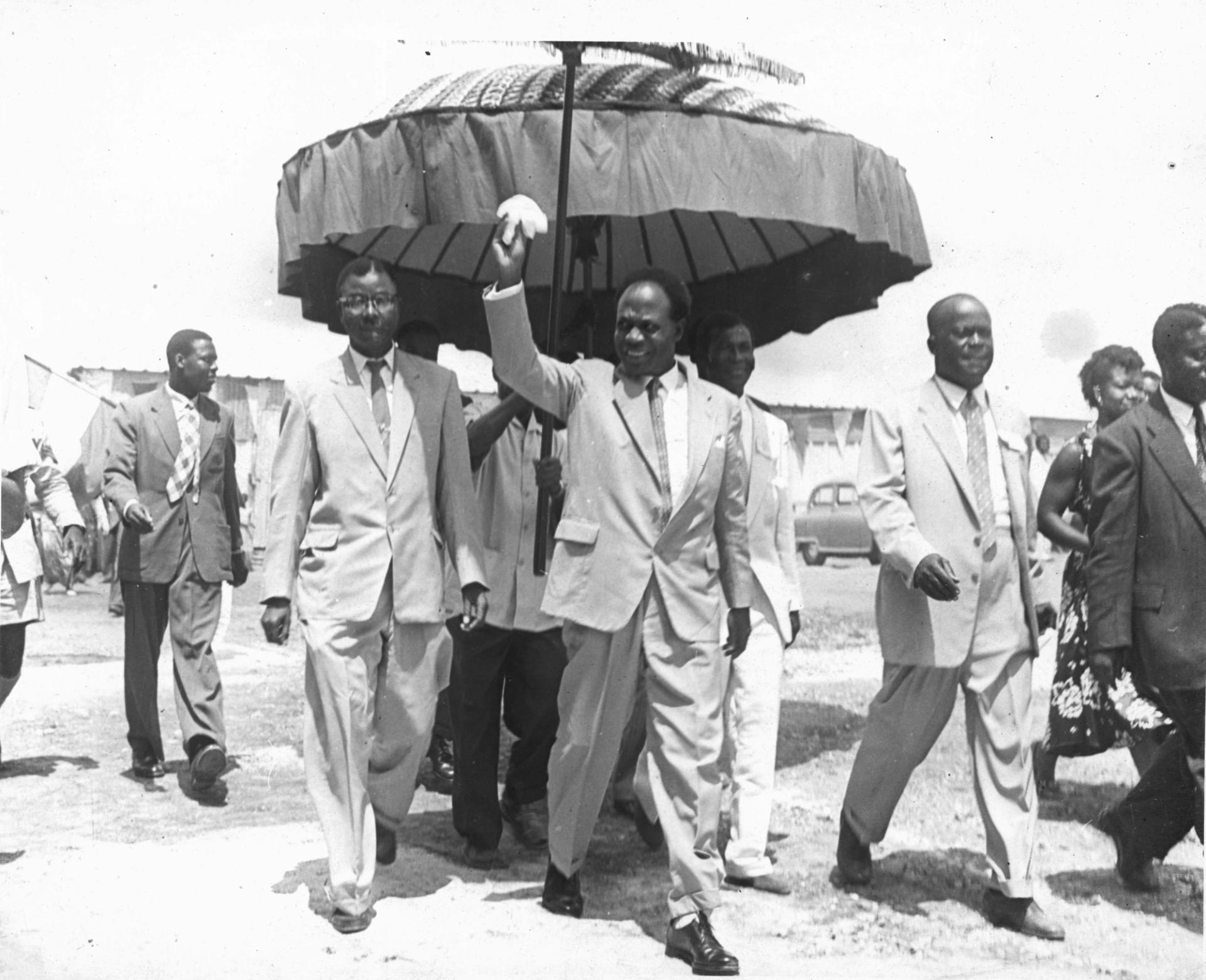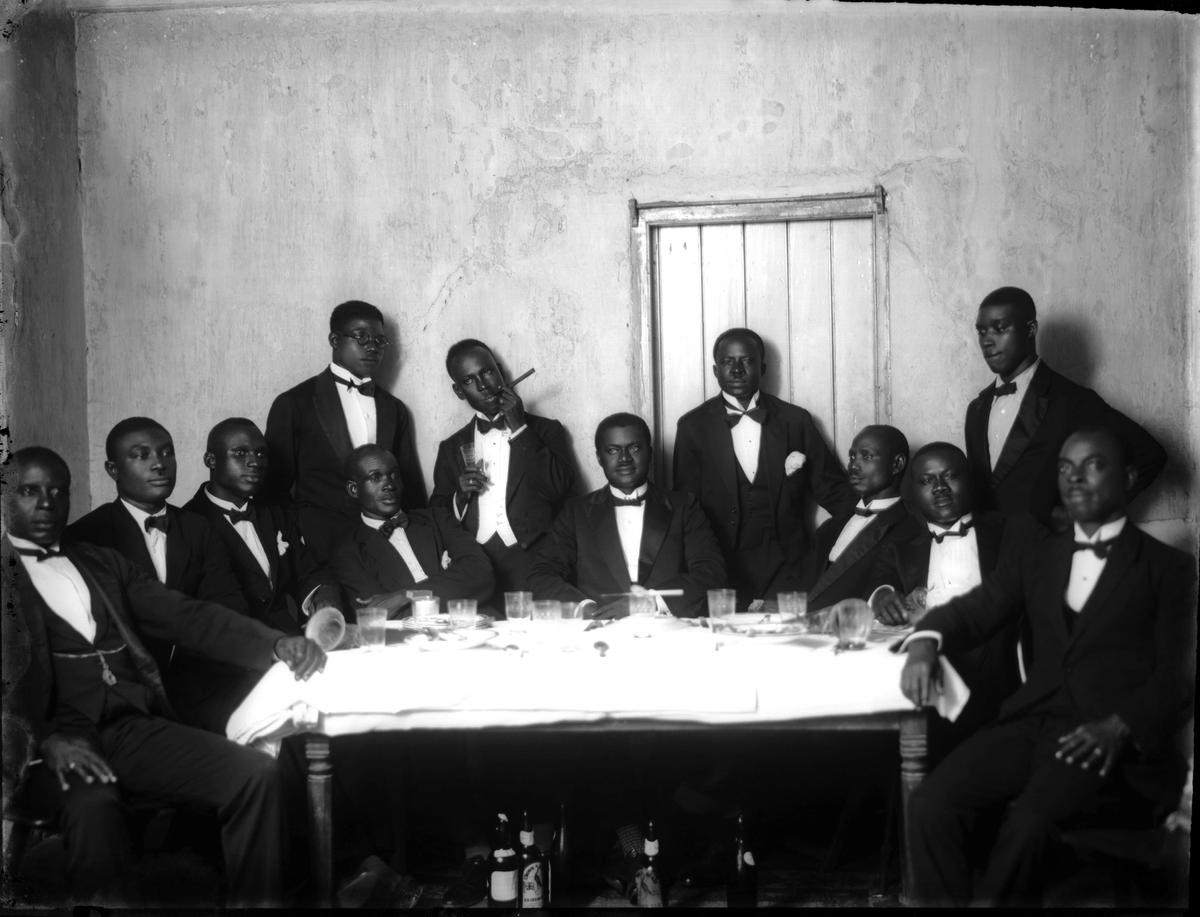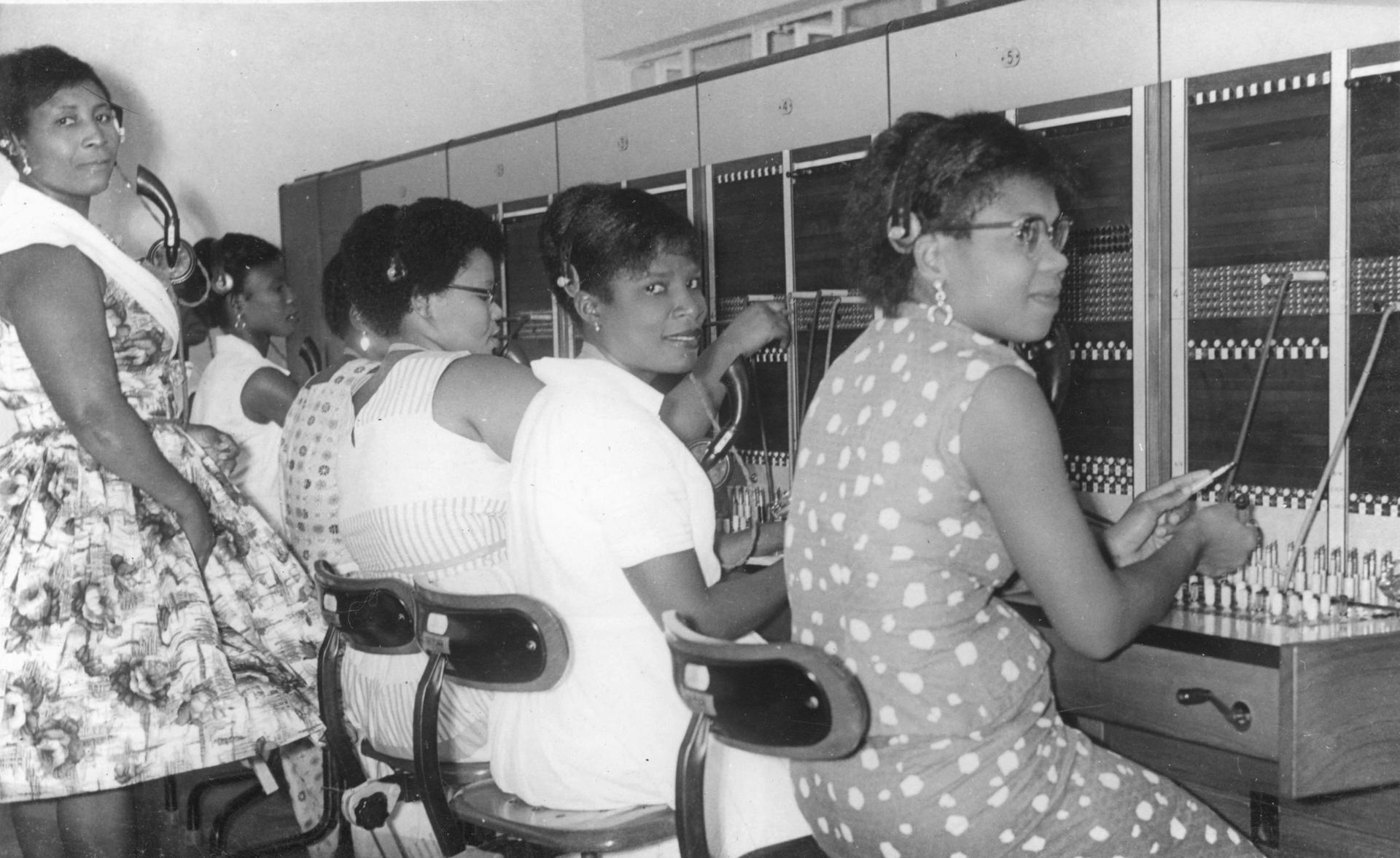J.K. Bruce-Vanderpuije was a Ghanaian photographer whose shots captured many major events and notable figures in Ghana’s pre and post-colonial history. On the 28th of February 1948, he captured the fatal shooting of three local ex-servicemen who were on a march to the seat of the British colonial government, protesting unpaid war allowances. Riots and further protests broke out in response to the shooting, and Bruce-Vanderpuije’s images were tendered as evidence in a commission of inquiry that was set up to investigate. The 1948 Accra riots, as they are now known, are said to have been a pivotal moment leading to the independence of Ghana and other African countries.

Image Courtesy of The Art Newspaper, Deo Gratias Studio and Efie Gallery, Dubai
Over the course of his seventy-year career, Bruce-Vanderpuije played a pivotal role in developing an authentic narrative and aesthetic of Africa through a non-colonial lens. Among the limited number of Ghanaian photographers who rose to prominence in the pre-independence era, his portfolio encompassed a wide spectrum of assignments and personal projects, including jobs from the government, corporate advertising campaigns, nation-shaping occurrences, and intimate depictions of everyday life. Through his meticulous documentation, he offered a diverse and abundant insight into the cultural tapestry of a nation. Comprising around 50,000 works, the photographer’s estate is still under the custodianship of the Deo Gratias studio in Accra, Ghana.
In his lifetime, Bruce-Vanderpuije founded The Deo Gratias Studio, a photo studio which is now over a 100 years old, which is now managed by his granddaughter Kate Aku Tamakloe. Under his helm, the studio was a hub of activity with diplomats, elites, and traditional and community leaders all trooping in to have their portraits taken. The studio has an archive of more than 50,000 images— taken over a span of seven decades—of figures ranging from Nkrumah to the late Ghanaian politician J.B. Danquah and the late British Queen Elizabeth II.

Image courtesy of The Art Newspaper, Deo Gratias Studio and Efie Gallery, Dubai
Around a decade ago, Tamakloe set out on a journey to categorise the images in the portfolio as a way to make it easier to process requests she was receiving for photographs. She grouped images based on themes including “families,” “weddings,” “funerals,” and “people wearing [specific] Kente design”. She took this journey with her now visually impaired 89-year-old father Isaac Hudson Bruce-Vanderpuije who is J.K’s son and the original inheritor of the space.
Prints of images from the archive, including the shot of Seth Anthony, were featured in a group presentation by Efie Gallery at the 1-54 Contemporary African Art Fair in London this past October. On 12 January 2024 the first gallery show titled to be dedicated to Bruce-Vanderpuije’s , titled Unveiling the Shadows of the Past: J.K Bruce-Vanderpuije – The Hidden Icon of Photography, will be on view at the Efie Gallery in Dubai. Curated by Ethiopian photographer Aida Muluneh, it will showcase more than 40 previously unseen black-and-white images by Bruce-Vanderpuije, depicting life in Ghana in the 1920s and 30s and offering insight into the formation of an independent, 20th-century Ghanaian social and political identity as the country prepared to liberate itself from colonial rule.

Image courtesy of The Art Newspaper, Deo Gratias Studio and Efie Gallery, Dubai


